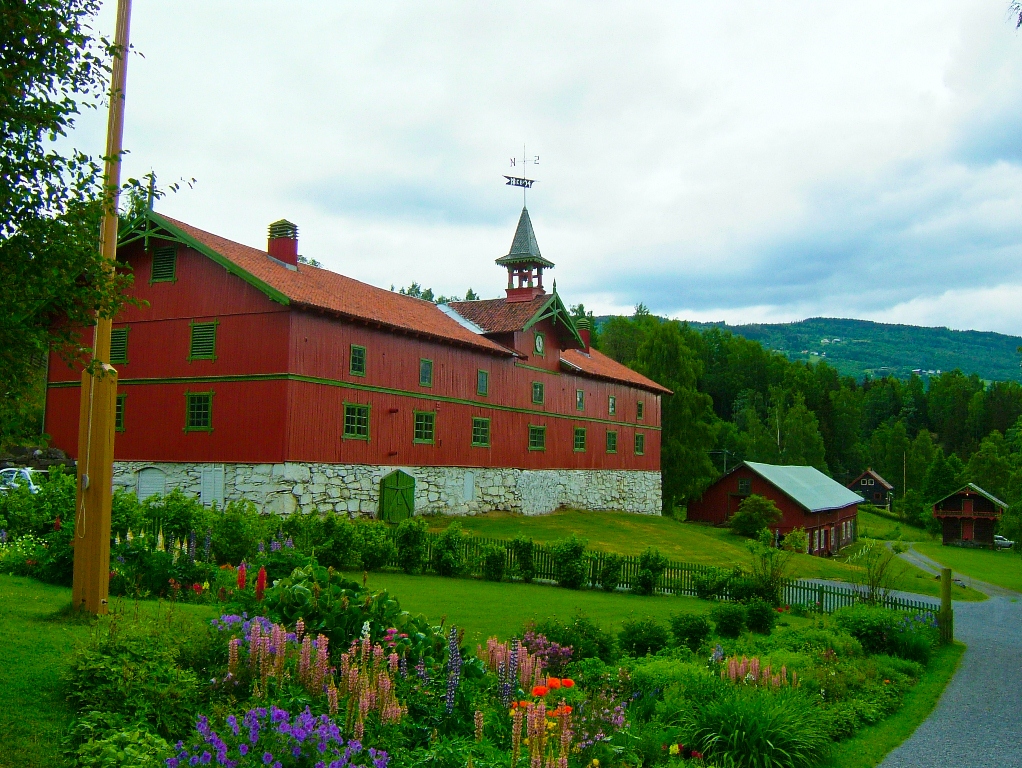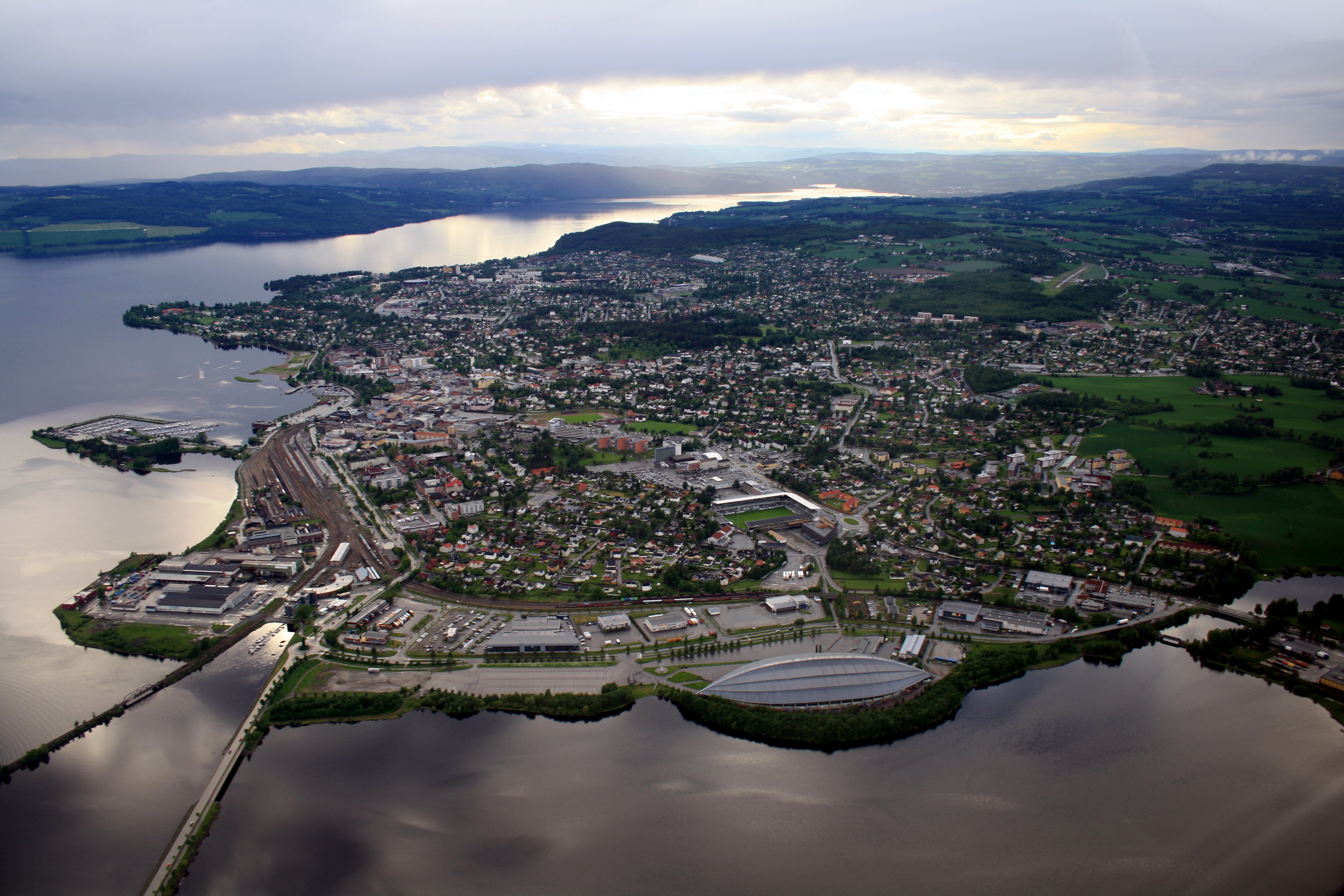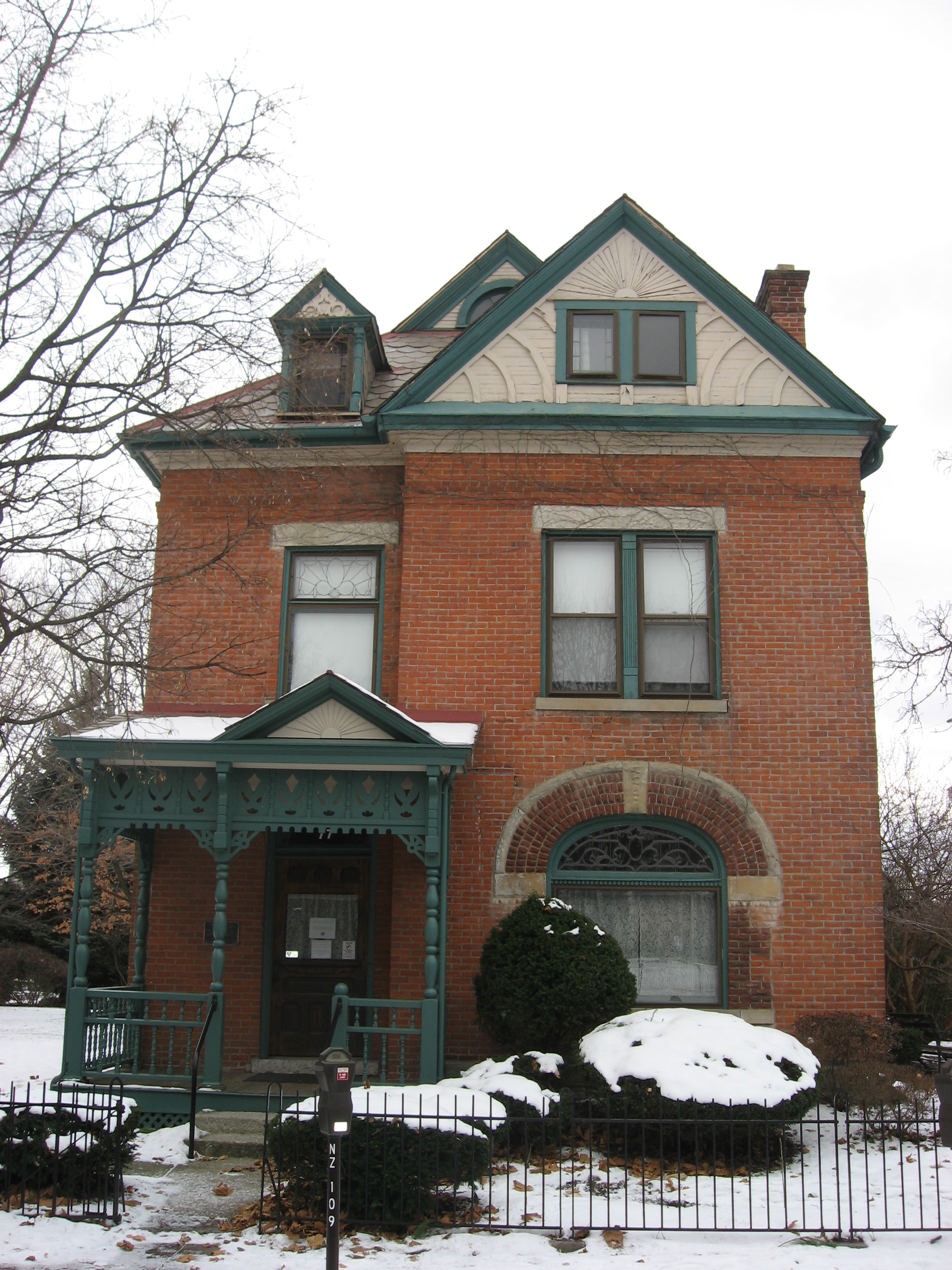|
Aulestad Barn
Aulestad is a farm and writer's house museum in Follebu in Innlandet county, Norway. It is located along County Road Fv255 (''Bjørnsonvegen'') between Vinstra and Hovemoen. The farm is best known as the former residence of Karoline Bjørnson, Karoline and Bjørnstjerne Bjørnson. Nobel Laureate Bjørnstjerne Bjørnson lived here with his family from 1875 until his death in 1910. The farm is still owned by members of the Bjørnson family. The manor was added to The Sandvig Collections at Lillehammer after Karoline Bjørnson's death in 1934. In 1935 Aulestad opened as a museum. It serves as a museum of Bjørnstjerne Bjørnson's life and work. Since 2011. Aulestad has been part of the Lillehammer, Lillehammer museum which operates Maihaugen, together with the Norwegian Olympic Museum and Bjerkebæk, the former home of author Sigrid Undset. References External linksBjørnsonvegen website Museums in Innlandet Literary museums in Norway Farm museums in Norway {{Norway-mus ... [...More Info...] [...Related Items...] OR: [Wikipedia] [Google] [Baidu] |
Follebu
Follebu is a village in Gausdal Municipality in Innlandet county, Norway. The village is located along the river Gausa, about to the southeast of the village of Segalstad bru. The town of Lillehammer lies about to the southeast of Follebu. Follebu Church (''Follebu kirke'') is located just to the northwest of the village. It was built in a Gothic style of stone and brick between the years 1260 and 1300. The village has a population (2021) of 1,160 and a population density of . Name The Old Norse form of the name was ''Foldabu''. The first element is probably the genitive In grammar, the genitive case (abbreviated ) is the grammatical case that marks a word, usually a noun, as modifying another word, also usually a noun—thus indicating an attributive relationship of one noun to the other noun. A genitive can al ... pluralis of ''fold'' which means "meadow", "plain", or "open and flat land". The last element of the name is ''bú'' which means "rural district". The area ... [...More Info...] [...Related Items...] OR: [Wikipedia] [Google] [Baidu] |
Innlandet
Innlandet is a county in Norway. It was created on 1 January 2020 with the merger of the old counties of Oppland and Hedmark (the municipalities of Jevnaker and Lunner were transferred to the neighboring county of Viken on the same date). The new county has an area of , making it the second largest county in Norway after Troms og Finnmark county. The county name translates to "The Inland" which reflects that the county is the only landlocked county in Norway. The county covers approximately 17% of the total area of the mainland area of Norway. It stretches from the Viken county and the Oslo region in the south to Trøndelag county in the north. In the northwest, the county borders Møre og Romsdal and the Vestland county in the west. To the east the county borders the Swedish counties of Värmland and Dalarna. The northern and western areas of the county are dominated by the mountainous areas Rondane, Dovrefjell and Jotunheimen. The Galdhøpiggen mountain is located within t ... [...More Info...] [...Related Items...] OR: [Wikipedia] [Google] [Baidu] |
Norway
Norway, officially the Kingdom of Norway, is a Nordic country in Northern Europe, the mainland territory of which comprises the western and northernmost portion of the Scandinavian Peninsula. The remote Arctic island of Jan Mayen and the archipelago of Svalbard also form part of Norway. Bouvet Island, located in the Subantarctic, is a dependency of Norway; it also lays claims to the Antarctic territories of Peter I Island and Queen Maud Land. The capital and largest city in Norway is Oslo. Norway has a total area of and had a population of 5,425,270 in January 2022. The country shares a long eastern border with Sweden at a length of . It is bordered by Finland and Russia to the northeast and the Skagerrak strait to the south, on the other side of which are Denmark and the United Kingdom. Norway has an extensive coastline, facing the North Atlantic Ocean and the Barents Sea. The maritime influence dominates Norway's climate, with mild lowland temperatures on the se ... [...More Info...] [...Related Items...] OR: [Wikipedia] [Google] [Baidu] |
Aulestad Barn
Aulestad is a farm and writer's house museum in Follebu in Innlandet county, Norway. It is located along County Road Fv255 (''Bjørnsonvegen'') between Vinstra and Hovemoen. The farm is best known as the former residence of Karoline Bjørnson, Karoline and Bjørnstjerne Bjørnson. Nobel Laureate Bjørnstjerne Bjørnson lived here with his family from 1875 until his death in 1910. The farm is still owned by members of the Bjørnson family. The manor was added to The Sandvig Collections at Lillehammer after Karoline Bjørnson's death in 1934. In 1935 Aulestad opened as a museum. It serves as a museum of Bjørnstjerne Bjørnson's life and work. Since 2011. Aulestad has been part of the Lillehammer, Lillehammer museum which operates Maihaugen, together with the Norwegian Olympic Museum and Bjerkebæk, the former home of author Sigrid Undset. References External linksBjørnsonvegen website Museums in Innlandet Literary museums in Norway Farm museums in Norway {{Norway-mus ... [...More Info...] [...Related Items...] OR: [Wikipedia] [Google] [Baidu] |
Writer's House Museum
Writers' homes (sometimes writer's, author's or literary houses) are locations where writers lived. Frequently, these homes are preserved as historic house museums and literary tourism destinations, called writer's home museums, especially when the homes are those of famous literary figures. Frequently these buildings are preserved to communicate to visitors more about the author than their work and its historical context. These exhibits are a form of biographical criticism. Visitors of the sites who are participating in literary tourism, are often fans of the authors, and these fans find deep emotional and physical connections to the authors through their visits. Sites include a range of activities common to cultural heritage sites, such as living history, museum exhibits, guided tours and poetry readings. ''New York Times'' commentator Anne Trubek counted 73 such houses in the United States. The tradition of preserving houses or sites important to famous authors has a long hi ... [...More Info...] [...Related Items...] OR: [Wikipedia] [Google] [Baidu] |
Vinstra
Vinstra is a town in Nord-Fron Municipality in Innlandet county, Norway. The town is the administrative centre of the municipality. The town is located in the Gudbrandsdalen valley, at the confluence of the Gudbrandsdalslågen river and the Vinstra river (which flows from the lake Vinstre). The town has a population (2021) of 2,678 and a population density of . The European route E6 highway and the Dovrebanen railway line both pass through the town. The Vinstra Upper Secondary School and the Sødorp Church are both located in the town as well. The newspaper '' Dølen'' is published in Vinstra. The village of Vinstra was granted the status of a "town" on 1 September 2013, an event that was celebrated for 3 days. Peer Gynt Peder Olsen Hågå from Vinstra was the model for the main character in Henrik Ibsen’s dramatic poem ''Peer Gynt'' which was published in 1867. In the old cemetery at Sødorp Chapel, there stands a monument to Peer Gynt, and each year since 1967 the Peer Gyn ... [...More Info...] [...Related Items...] OR: [Wikipedia] [Google] [Baidu] |
Karoline Bjørnson
Karoline Bjørnson (née Reimers, 1 December 1835 – 27 June 1934) was a Norwegian actress. She is best known as the wife and supporter of poet, playwright, popular speaker and Nobel laureate Bjørnstjerne Bjørnson. Biography Karoline Johanne Elisabeth Reimers was born at Etne in Hordaland and grew up in Bergen, Norway. She was the daughter of Rasmus Helt Reimers (1801–1884) and Marie Jahn (1806–1841). The Reimers and Jahn families had originally immigrated from Germany. She became a student at the Kristiania norske Theater from 1854. In 1858 she was given a role in a play at Det Norske Theater in Bergen, and then joined the theater on a tour to Trondheim. She was married to Bjørnstären Bjørnson from 1858 and to his death in 1910. She was the model for several of Bjørnson's literary women figures, and helping out with articles and other literary works. The figures "Klara Sang" and "Tora Parsberg" are modelled after her. Several of Bjørnson's poems are d ... [...More Info...] [...Related Items...] OR: [Wikipedia] [Google] [Baidu] |
Bjørnstjerne Bjørnson
Bjørnstjerne Martinius Bjørnson ( , ; 8 December 1832 – 26 April 1910) was a Norwegian writer who received the 1903 Nobel Prize in Literature "as a tribute to his noble, magnificent and versatile poetry, which has always been distinguished by both the freshness of its inspiration and the rare purity of its spirit". The first Norwegian Nobel laureate, he was a prolific polemicist and extremely influential in Norwegian public life and Scandinavian cultural debate. Bjørnson is considered to be one of the four great Norwegian writers, alongside Ibsen, Lie, and Kielland. He is also celebrated for his lyrics to the Norwegian national anthem, "Ja, vi elsker dette landet". The composer Fredrikke Waaler based a composition for voice and piano (''Spinnersken'') on a text by Bjørnson, as did Anna Teichmüller (''Die Prinzessin''). Childhood and education Bjørnson was born at the farmstead of Bjørgan in Kvikne, a secluded village in the Østerdalen district, some sixty miles so ... [...More Info...] [...Related Items...] OR: [Wikipedia] [Google] [Baidu] |
Lillehammer
Lillehammer () is a municipality in Innlandet county, Norway. It is located in the traditional district of Gudbrandsdal. The administrative centre of the municipality is the town of Lillehammer. Some of the more notable villages in the municipality include Fåberg, Hunderfossen, Jørstadmoen, Vingnes, and Vingrom. The municipality is the 211th largest by area out of the 356 municipalities in Norway. Lillehammer is the 38th most populous municipality in Norway with a population of 28,425. The municipality's population density is and its population has increased by 6.2% over the previous 10-year period. The town of Lillehammer is the largest urban centre in the municipality. It lies in the central part of the municipality and it is surrounded by more rural areas. The town centre is a late nineteenth-century concentration of wooden houses, which enjoys a picturesque location overlooking the northern part of lake Mjøsa and the river Lågen, surrounded by mountains. Lillehamm ... [...More Info...] [...Related Items...] OR: [Wikipedia] [Google] [Baidu] |
Maihaugen
Maihaugen (''De Sandvigske Samlinger på Maihaugen, Lillehammer'') is one of the most visited tourist attractions in Lillehammer, Norway. Maihaugen, with close to 200 buildings, is one of Northern Europe's largest open-air museums and is one of the largest cultural facilities in Norway. History The founder, Anders Sandvig, collected from old houses and farmyards within Gudbrandsdalen to provide a sample of Norwegian culture and history in a museum. He first started in his backyard, but when his collection grew, in 1901, the town council offered him a permanent site for the museum. In 1904, the city of Lillehammer set aside an area already known as Maihaugen and bought Sandvig's collection and established the Sandvig Collections (''Sandvigske Samlinger''), the formal name for Maihaugen. Sandvig was at first hired as an unpaid curator but was later appointed the museum's first director. The new site of the museum had been used as a picnic and meeting place for the townspeople. Pe ... [...More Info...] [...Related Items...] OR: [Wikipedia] [Google] [Baidu] |
Norwegian Olympic Museum
Norwegian Olympic Museum (''Norges Olympiske Museum'') is located at Maihaugen in Lillehammer, Norway. The Norwegian Olympic Museum shows the history of the Olympic Games in ancient and modern times, with a focus on the 1952 Winter Olympics in Oslo and 1994 Winter Olympics at Lillehammer. Olympic highlights are presented through interactive installations, multimedia presentations and stories related to authentic objects. In addition to the permanent exhibition, the museum also displays temporary exhibitions with a theme related to sports history and athletic achievements. Paralympics and the Youth Olympics have their own sections in the museum. The Norwegian Olympic Museum was officially opened by King Harald V and Queen Sonja on November 27, 1997, in Håkons Hall. The museum was reopened as a new modern museum at Maihaugen in 2016. The museum has interactive installations, multimedia presentations and original objects. It is the only museum in northern Europe that presen ... [...More Info...] [...Related Items...] OR: [Wikipedia] [Google] [Baidu] |






.jpg)